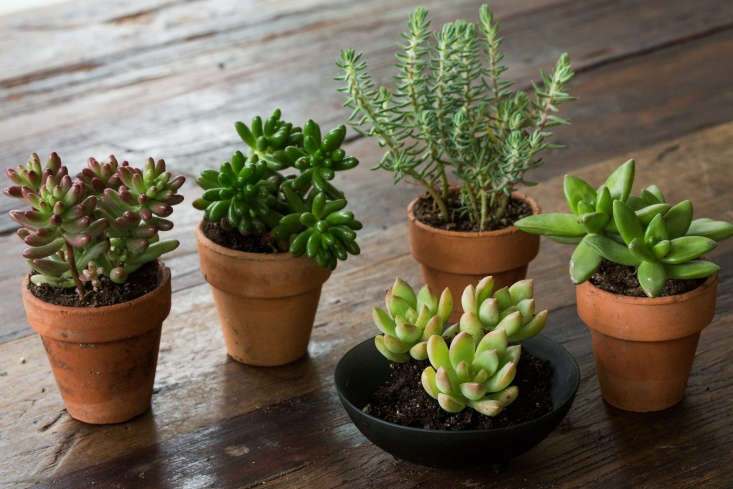If only we could identify our particular succulents, we’d know how to keep our little friends happy—no more droopy, shriveled leaves, yellowing stems, or threats of sudden death. At least that’s the theory.
This is the third installment of our Succulents Explained series (you can identify Kalanchoes and Sedums and Crassulas and Sempervivums with tips from our previous posts). We’re focusing on Graptosedums and Graptoverias today (hereafter: Graptos) because these hybrid succulents, which result from crosses between cousins, are everywhere we turn these days. At the plant nursery the other day there were so many that the Graptos were grabbing my pants legs and begging, “Please, miss, can’t you take me home?”
So … why are there so many Graptosedum and Graptoveria cultivars, how do you know if your succulent is one, and are Graptos the succulents for you? Keep reading to find out.
Photography by Mimi Giboin.
Graptoverias

First, what is a succulent? We’ve covered this before, so a summary: “Succulent” is an adjective that describes a plant’s characteristics, not its formal botanical name. There’s no single plant family (or genus, or species) called succulents. Instead, there are thousands of kinds of succulent plants with similar physical characteristics: pillowy leaves where they store their own water supply, thick stems, and swollen roots.
In the world of succulents, plants get hybridized frequently. Breeders are always crossing one succulent with another to try to come up with a super offspring that embodies the best characteristics of its parents. Plants that belong to the succulent family known as Graptopetalum, with colorful rosette shapes, are frequently crossed with compact Sedums or waxy Echeverias with the intent to emphasize the best features of both.
In the Graptoveria cross shown above, for example, you can see its parents in its shape (rosette), leaf structure (pointed), and color (ghostly gray-blue).
Sedums

Sedums never get woody stems, are perennial, and produce diminutive flowers with five petals. The main reason to cross these low-growing, hardy succulents with Graptopetalums is to create attractive, compact perennial ground covers.
Graptosedums

The hybrids have more interesting shapes, colors, and textures than their parents. I think this is what we all want for our children, by the way.


So, are Graptos for you? In general, they will perform better outdoors in the garden than indoors as houseplants (this is true of most succulents with blue-gray or purple leaves). If you can offer them sandy soil, bright, indirect sunlight, and the promise of good drainage, they will spread quickly to create plush perennials mats in garden beds.
If, however, you’re looking for a houseplant, these may not be the best succulents for you. To choose the best indoor succulents, see our earlier posts, 9 Secrets to Growing Succulent Plants Indoors and Succulents: 8 Tips to Help Your Favorite Indoor Plants Survive Winter.
See more growing tips in our curated guides to our favorite Succulents & Cacti 101, including Aloes, Agaves, and Aeoniums.









Have a Question or Comment About This Post?
Join the conversation